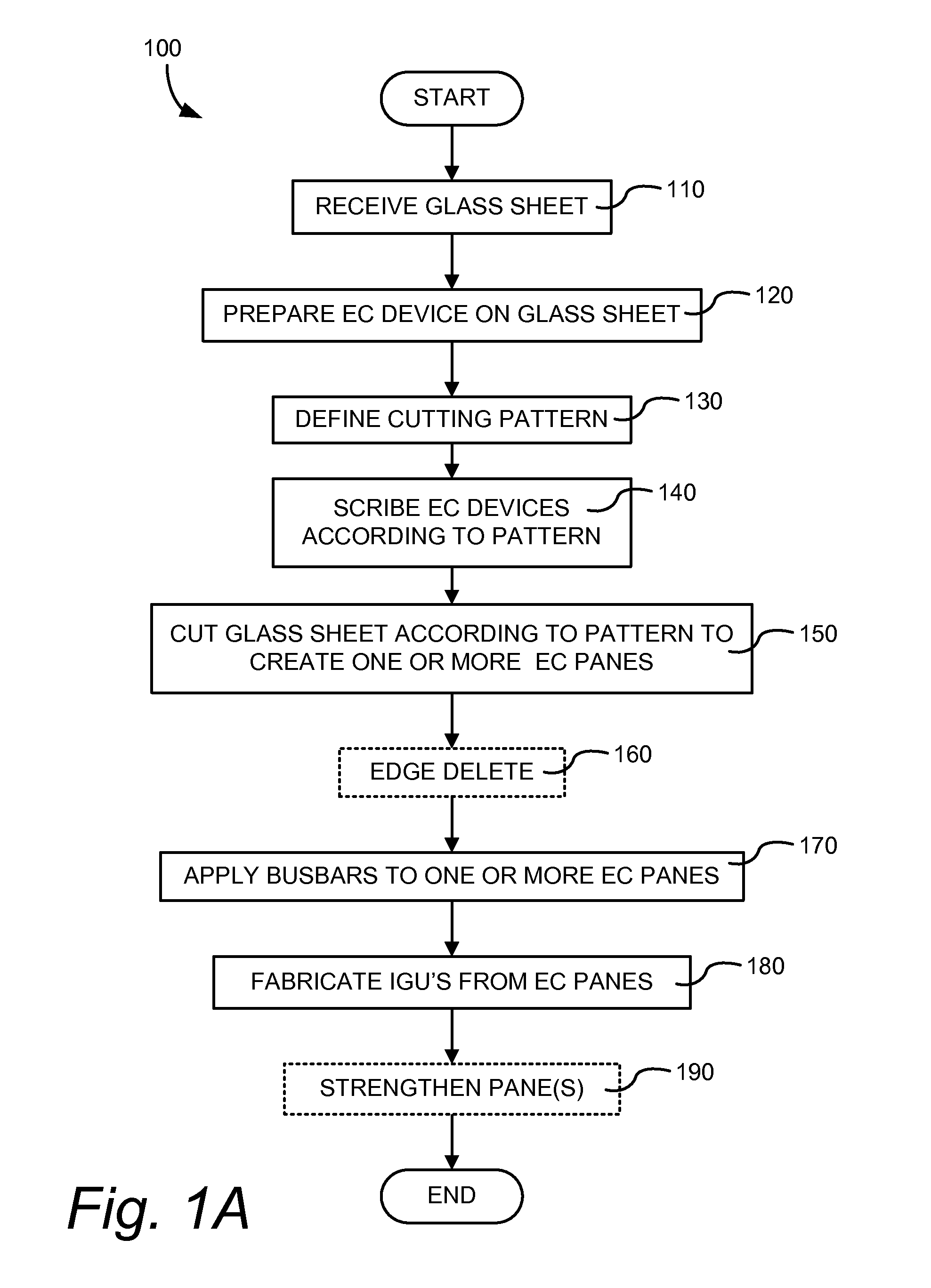Electrochromic window fabrication methods
a technology of electrochromic windows and fabrication methods, applied in door/window protective devices, non-linear optics, instruments, etc., can solve the problem of limited size of electrochromic windows, and achieve the effect of maximizing the efficient use of glass sheets
- Summary
- Abstract
- Description
- Claims
- Application Information
AI Technical Summary
Benefits of technology
Problems solved by technology
Method used
Image
Examples
Embodiment Construction
[0023]For window applications, it is important that electrochromic panes be both strong and relatively free of defects. Conventionally, glass panes are strengthened by tempering. Unfortunately, the tempering process can introduce defects in an electrochromic device. Hence, most efforts to produce electrochromic windows employ a fabrication sequence of first cutting a glass pane to size, then tempering the glass, and finally forming the electrochromic device on the tempered window pane. The electrochromic device is typically formed by depositing a sequence of thin layers on one side of the pre-cut and tempered glass pane. Unfortunately, the described sequence of cutting and then forming the EC device frequently gives rise to some low quality electrochromic windows because modern fabrication processes often produce one or more visible defects on an electrochromic device. Of course, the manufacturer may refuse to tolerate low quality devices, but rejection of low quality panes correspo...
PUM
| Property | Measurement | Unit |
|---|---|---|
| perimeter | aaaaa | aaaaa |
| perimeter | aaaaa | aaaaa |
| length | aaaaa | aaaaa |
Abstract
Description
Claims
Application Information
 Login to View More
Login to View More - R&D
- Intellectual Property
- Life Sciences
- Materials
- Tech Scout
- Unparalleled Data Quality
- Higher Quality Content
- 60% Fewer Hallucinations
Browse by: Latest US Patents, China's latest patents, Technical Efficacy Thesaurus, Application Domain, Technology Topic, Popular Technical Reports.
© 2025 PatSnap. All rights reserved.Legal|Privacy policy|Modern Slavery Act Transparency Statement|Sitemap|About US| Contact US: help@patsnap.com



